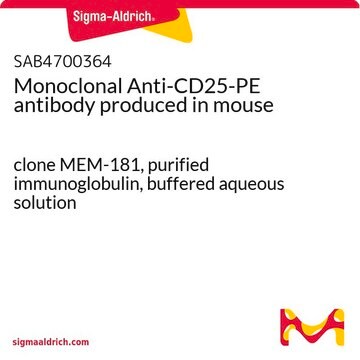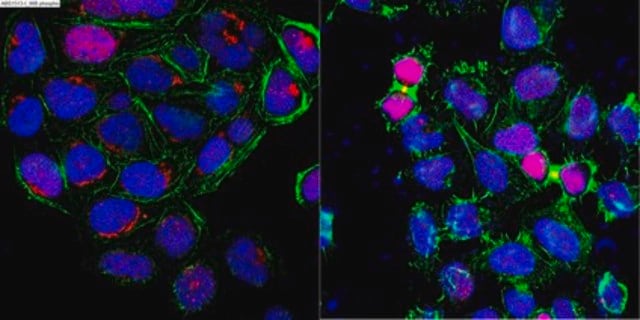F1773
Anti-CD4−FITC antibody, Mouse monoclonal
clone Q4120, purified from hybridoma cell culture
Synonym(e):
Monoclonal Anti-CD4
About This Item
Empfohlene Produkte
Biologische Quelle
mouse
Konjugat
FITC conjugate
Antikörperform
purified immunoglobulin
Antikörper-Produkttyp
primary antibodies
Klon
Q4120, monoclonal
Form
buffered aqueous solution
Mol-Gew.
antigen 59 kDa
Speziesreaktivität
human
Methode(n)
flow cytometry: 10 μL using 1 × 106 cells
Isotyp
IgG1
UniProt-Hinterlegungsnummer
Versandbedingung
wet ice
Lagertemp.
2-8°C
Posttranslationale Modifikation Target
unmodified
Angaben zum Gen
human ... CD4(920)
Suchen Sie nach ähnlichen Produkten? Aufrufen Leitfaden zum Produktvergleich
Allgemeine Beschreibung
Spezifität
Immunogen
Anwendung
- identification, quantification and monitoring of helper/inducer T cells in peripheral blood, biological fluids, lymphoid organs, and other tissues
- analysis of T cell mediated cytotoxicity
- characterization of subtypes of T cell leukemias and lymphomas
- studies of T cells in health and disease
- flow cytometry
Biochem./physiol. Wirkung
Zielbeschreibung
Physikalische Form
Angaben zur Herstellung
Haftungsausschluss
Not finding the right product?
Try our Produkt-Auswahlhilfe.
Lagerklassenschlüssel
10 - Combustible liquids
WGK
nwg
Flammpunkt (°F)
Not applicable
Flammpunkt (°C)
Not applicable
Persönliche Schutzausrüstung
Eyeshields, Gloves, multi-purpose combination respirator cartridge (US)
Analysenzertifikate (COA)
Suchen Sie nach Analysenzertifikate (COA), indem Sie die Lot-/Chargennummer des Produkts eingeben. Lot- und Chargennummern sind auf dem Produktetikett hinter den Wörtern ‘Lot’ oder ‘Batch’ (Lot oder Charge) zu finden.
Besitzen Sie dieses Produkt bereits?
In der Dokumentenbibliothek finden Sie die Dokumentation zu den Produkten, die Sie kürzlich erworben haben.
Unser Team von Wissenschaftlern verfügt über Erfahrung in allen Forschungsbereichen einschließlich Life Science, Materialwissenschaften, chemischer Synthese, Chromatographie, Analytik und vielen mehr..
Setzen Sie sich mit dem technischen Dienst in Verbindung.








